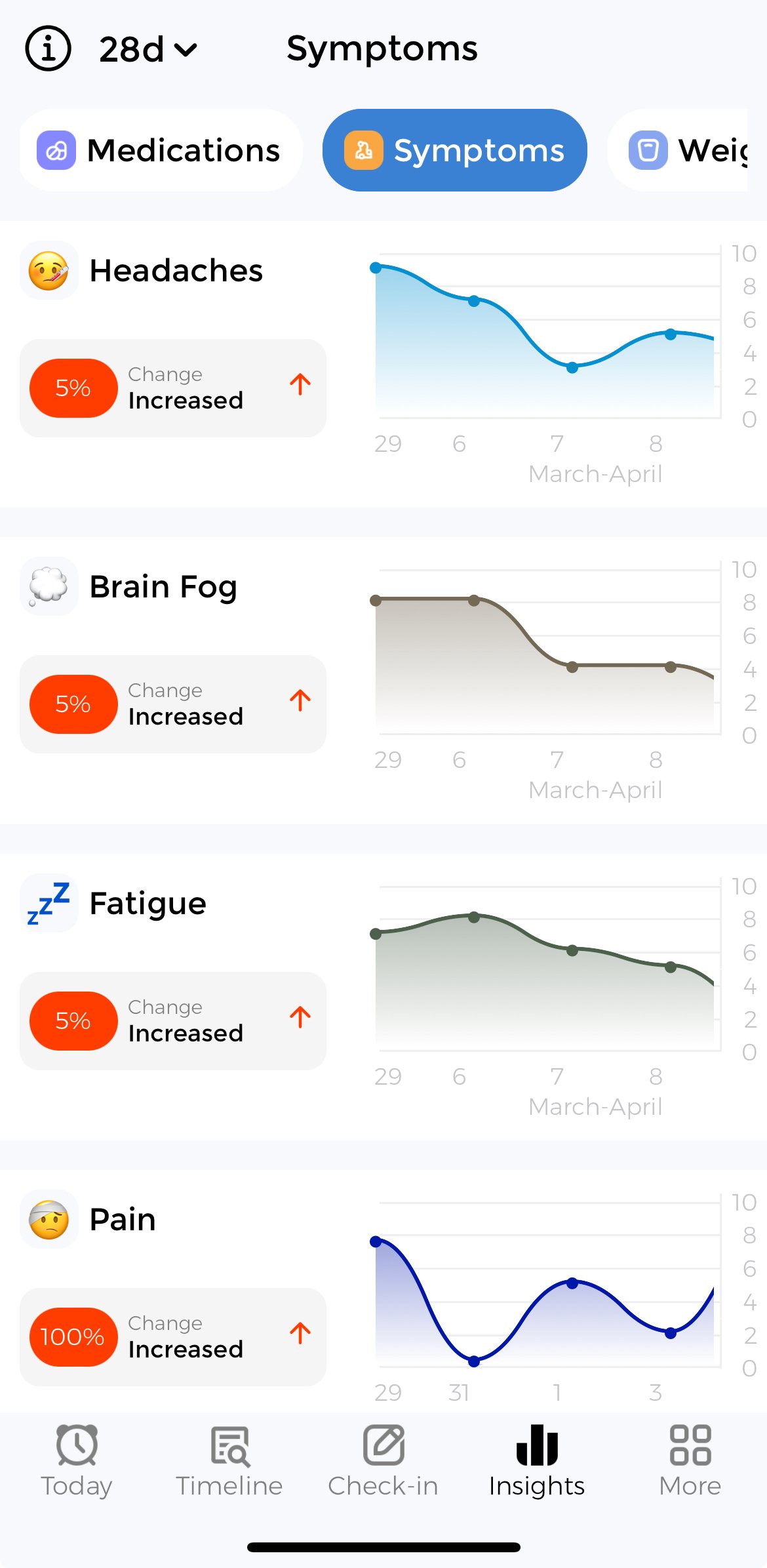Symptom Directory
Find the symptoms to track, analyze, and manage your health more effectively with CareClinic, rated the #1 symptom tracker app.
Symptom Lookup
Find Your Symptom
A
Abdominal Discomfort After Eating
1 related condition
Abdominal Discomfort After Eating Tracker View TrackerB
Burning Sensation While Urinating
2 related conditions
Burning Sensation While Urinating Tracker View TrackerC
D
Difficulty Understanding Conversations
1 related condition
Difficulty Understanding Conversations Tracker View TrackerDifficulty Achieving An Erection
1 related condition
Difficulty Achieving An Erection Tracker View TrackerDifficulty Starting Urination
1 related condition
Difficulty Starting Urination Tracker View TrackerDifficulty Completing Familiar Tasks
4 related conditions
Difficulty Completing Familiar Tasks Tracker View TrackerDistress In Social Situations
1 related condition
Distress In Social Situations Tracker View TrackerDifficulty Stopping The Behavior
1 related condition
Difficulty Stopping The Behavior Tracker View TrackerDifficulty Seeing Fine Details
1 related condition
Difficulty Seeing Fine Details Tracker View TrackerDifficulty Wearing Contact Lenses
1 related condition
Difficulty Wearing Contact Lenses Tracker View TrackerDifficulty Grasping Large Objects
2 related conditions
Difficulty Grasping Large Objects Tracker View TrackerDifficulty Adapting To Darkness
1 related condition
Difficulty Adapting To Darkness Tracker View TrackerDelayed Developmental Milestones
2 related conditions
Delayed Developmental Milestones Tracker View TrackerE
Electric Shock-like Sensations
1 related condition
Electric Shock-like Sensations Tracker View TrackerF
Feeling Of Incomplete Evacuation
3 related conditions
Feeling Of Incomplete Evacuation Tracker View TrackerG
H
Heart Conduction Abnormalities
2 related conditions
Heart Conduction Abnormalities Tracker View TrackerI
Increased Sensitivity To Touch
1 related condition
Increased Sensitivity To Touch Tracker View TrackerJ
K
L
Limitations In Adaptive Behavior
2 related conditions
Limitations In Adaptive Behavior Tracker View TrackerM
N
O
P
Prolonged Bleeding After Injury
2 related conditions
Prolonged Bleeding After Injury Tracker View TrackerProlonged Nighttime Sleep Duration
1 related condition
Prolonged Nighttime Sleep Duration Tracker View TrackerPinpoint-sized Reddish-purple Spots
2 related conditions
Pinpoint-sized Reddish-purple Spots Tracker View TrackerR
Rapid Heartbeat Upon Standing
2 related conditions
Rapid Heartbeat Upon Standing Tracker View TrackerRecurring Respiratory Infections
1 related condition
Recurring Respiratory Infections Tracker View TrackerRecurrent Respiratory Infections
1 related condition
Recurrent Respiratory Infections Tracker View TrackerReduced Problem-solving Ability
1 related condition
Reduced Problem-solving Ability Tracker View TrackerReduced Functional Independence
1 related condition
Reduced Functional Independence Tracker View TrackerS
T
Trouble Understanding Visual Images
1 related condition
Trouble Understanding Visual Images Tracker View TrackerU
Unusually Heavy Menstrual Flow
2 related conditions
Unusually Heavy Menstrual Flow Tracker View TrackerV
W
Y

Why Track Your Symptoms?
Identify Patterns
Discover connections between your symptoms and potential triggers or activities.
Improve Doctor Visits
Share accurate symptom history with your healthcare providers for better decisions.
Monitor Progress
See how your symptoms change over time and how treatments are working.
Take Control
Gain confidence and peace of mind by actively managing your health.
